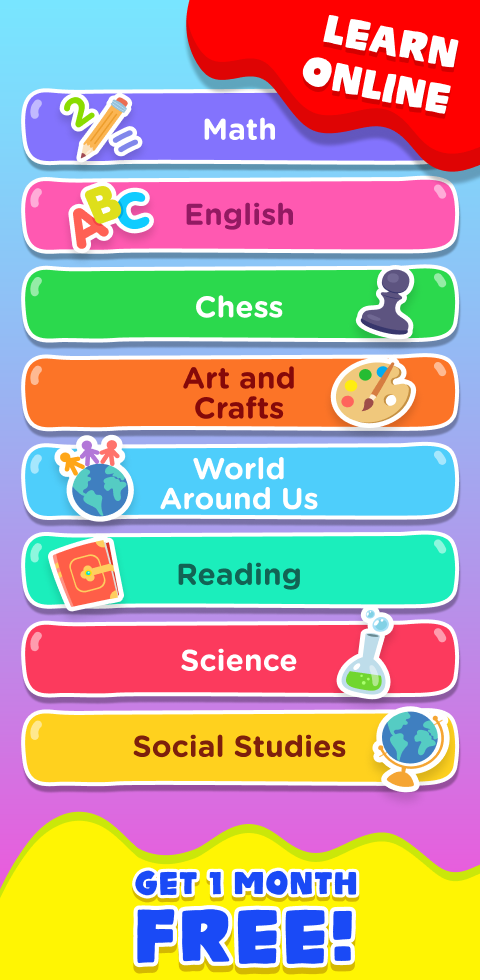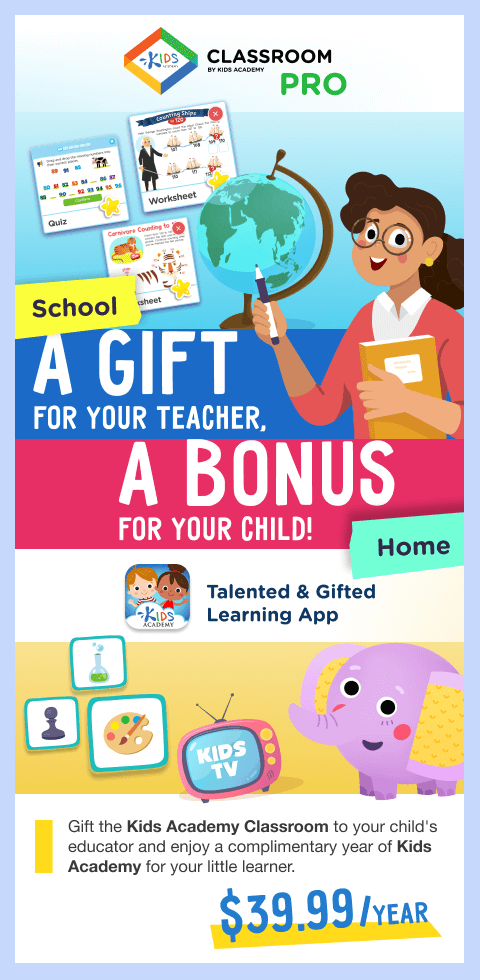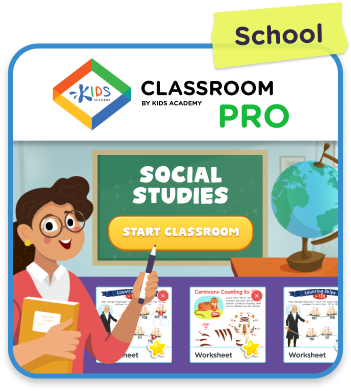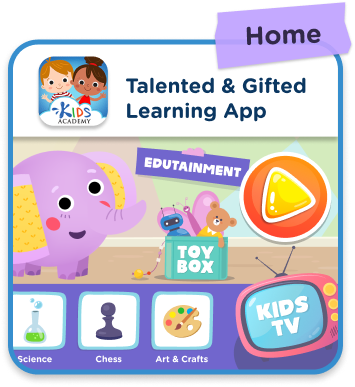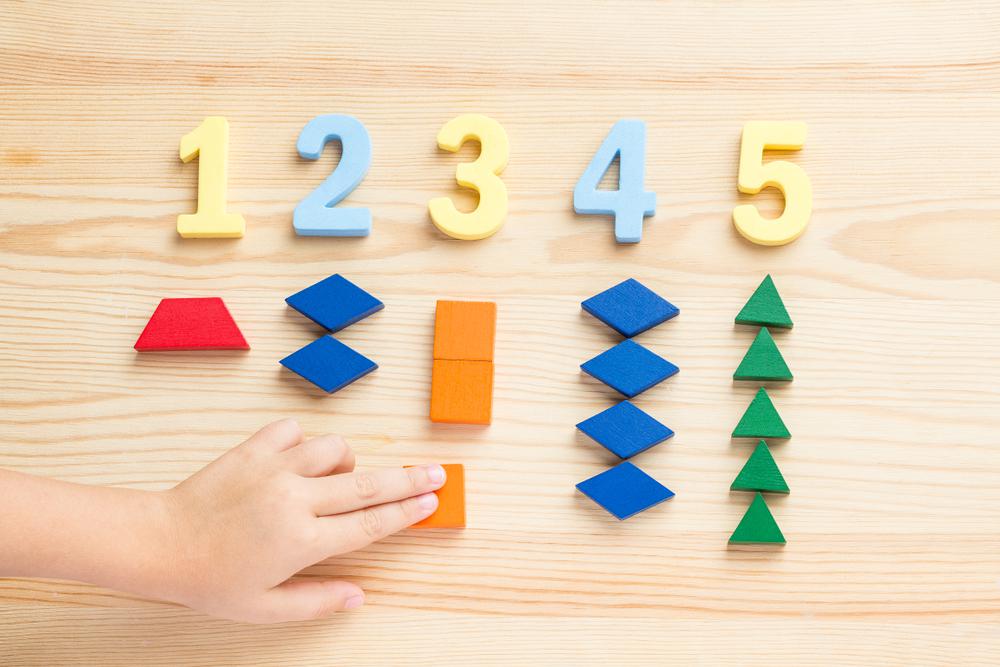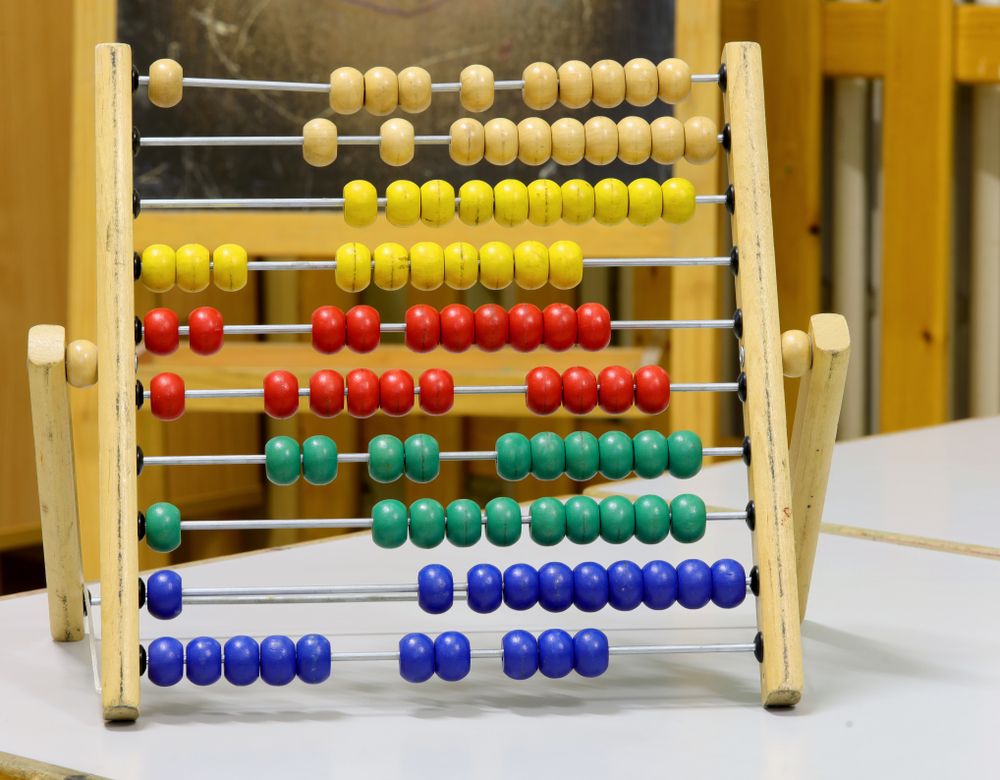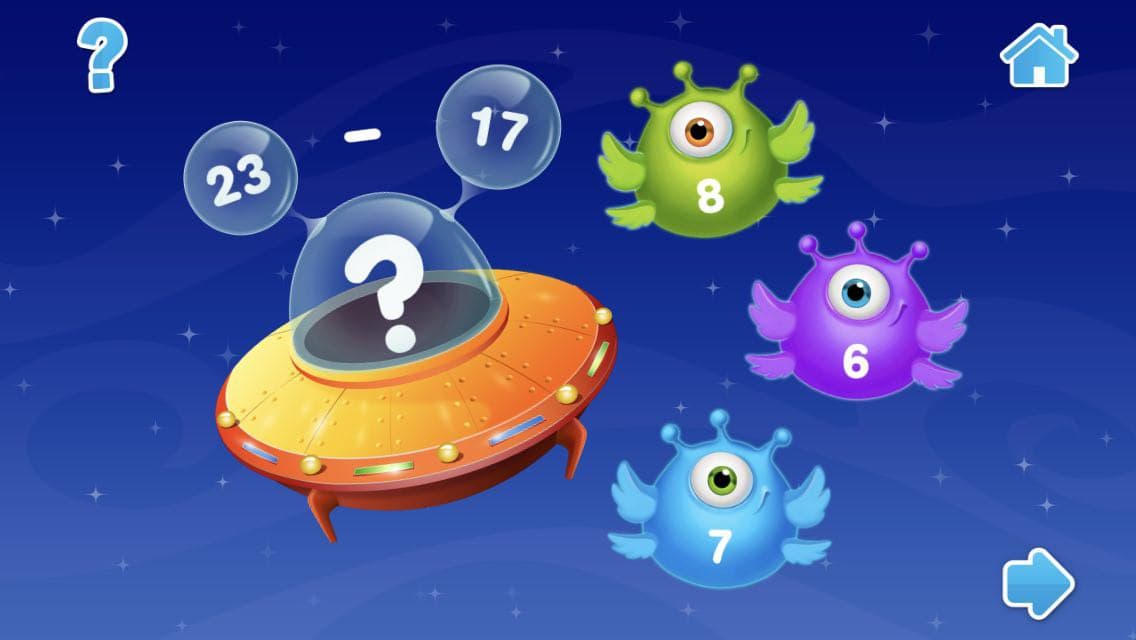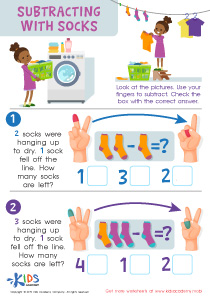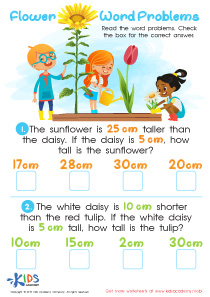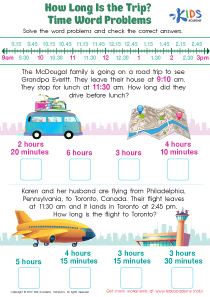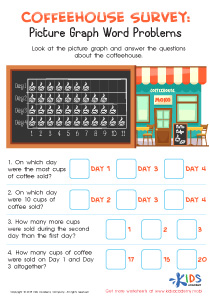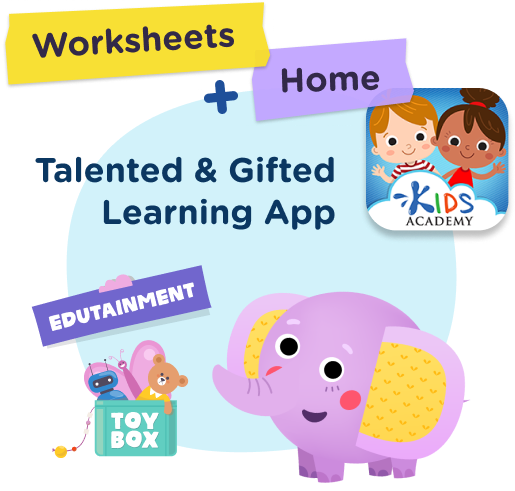Easy Addition and Subtraction Word Problems Worksheets for Ages 7-8
37 filtered results
-
From - To
Introduce your 7-8-year-olds to the world of math with our Easy Addition and Subtraction Word Problems worksheets! These educational interactive worksheets are expertly designed to engage young minds while enhancing their problem-solving skills. Each worksheet integrates fun scenarios that children can relate to, making learning both enjoyable and relatable. Perfect for reinforcing classroom learning at home, our worksheets help build a strong foundation in basic arithmetic through clear, easy-to-follow problems. Encourage your child's love for math with this essential toolkit, guaranteed to make addition and subtraction as easy as 1, 2, 3!
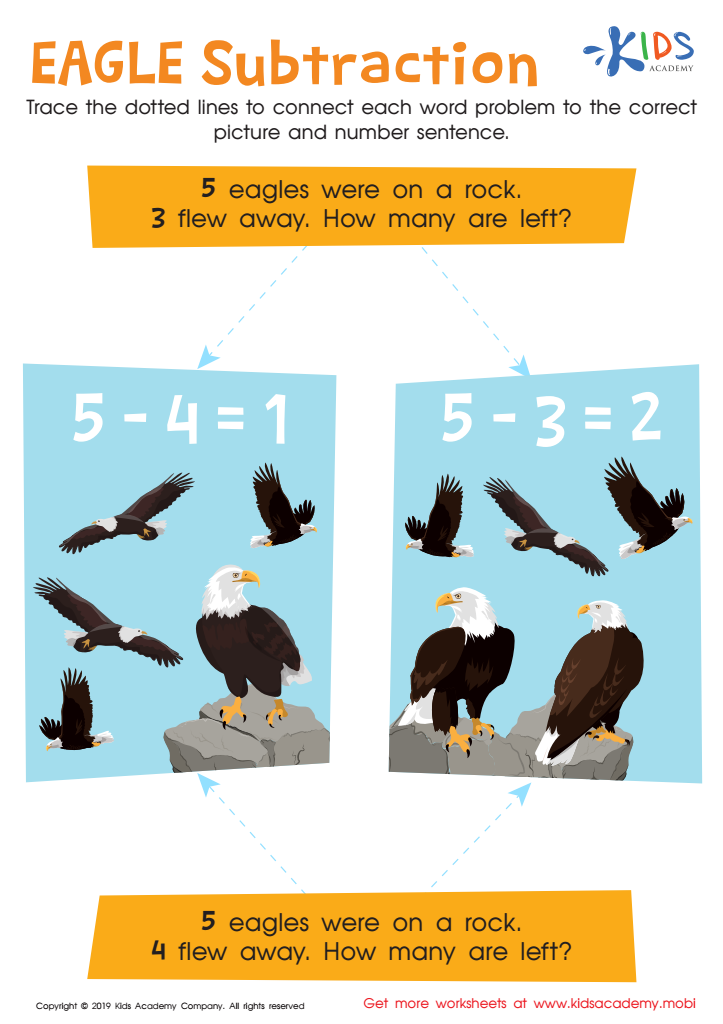

Eagle Subtraction Worksheet
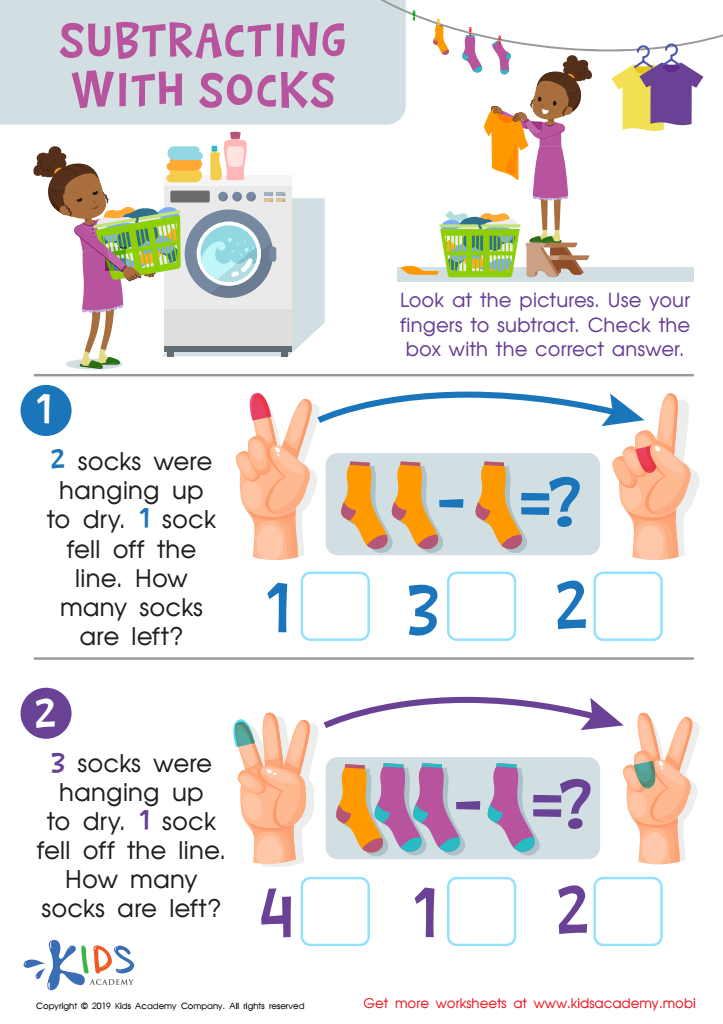

Subtracting Socks Worksheet
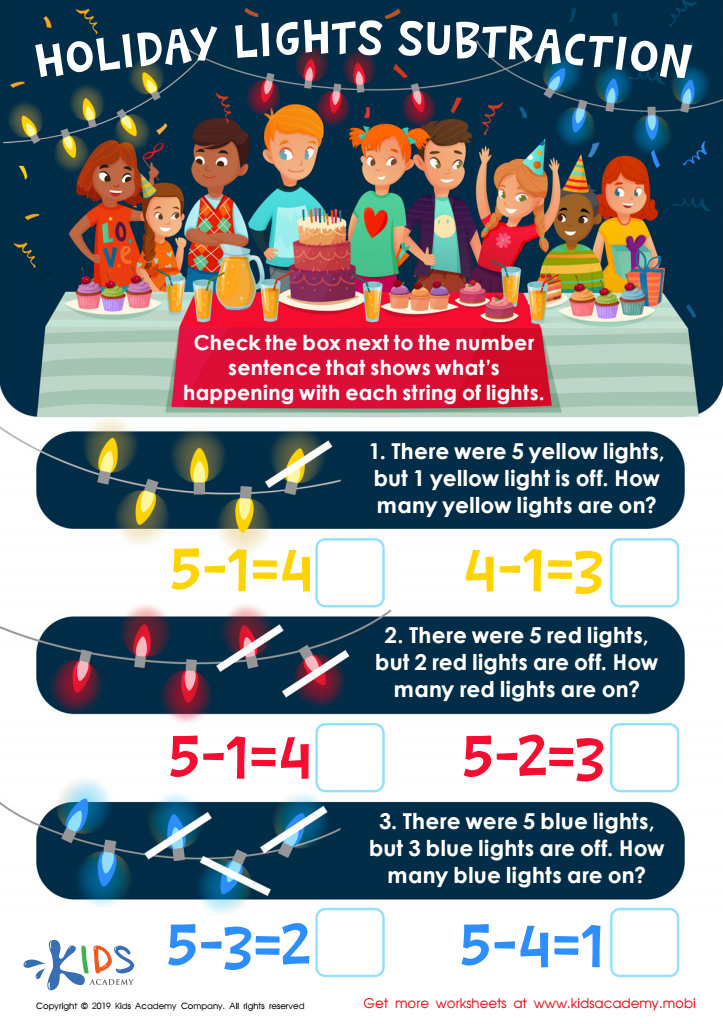

Holiday Lights Subtraction Worksheet
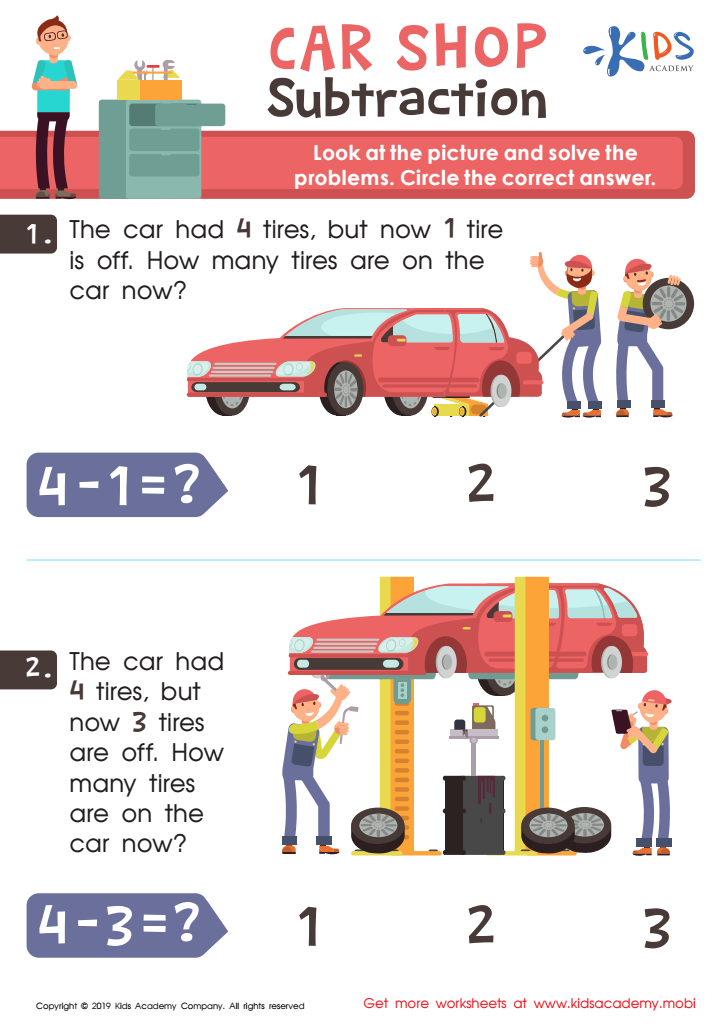

Car Shop Subtraction Worksheet
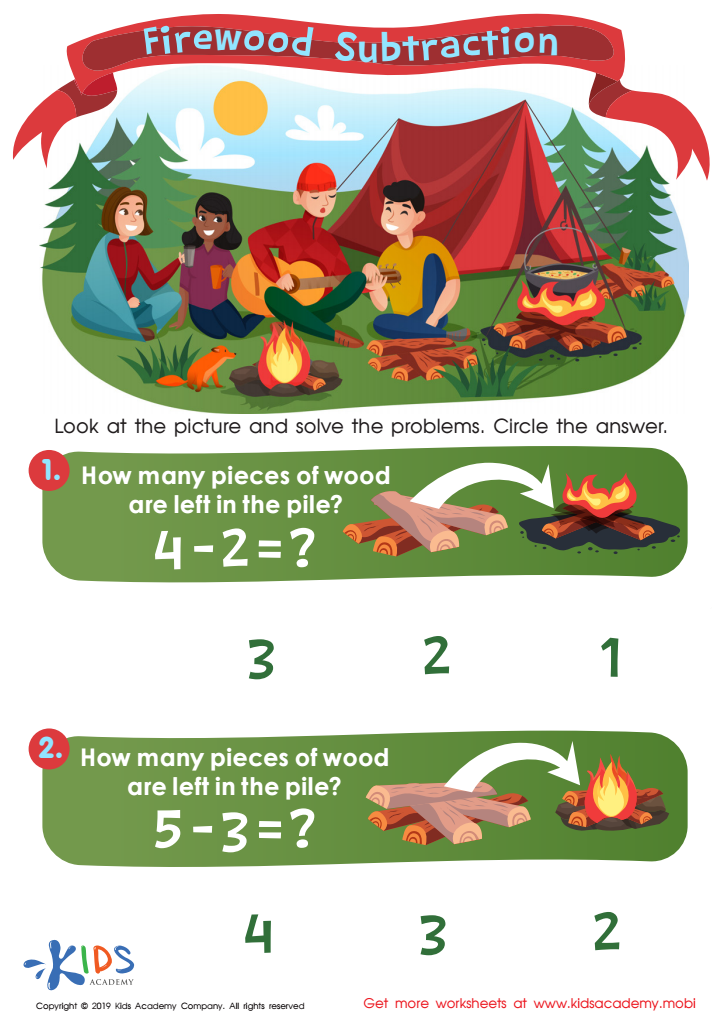

Firewood Subtraction Worksheet
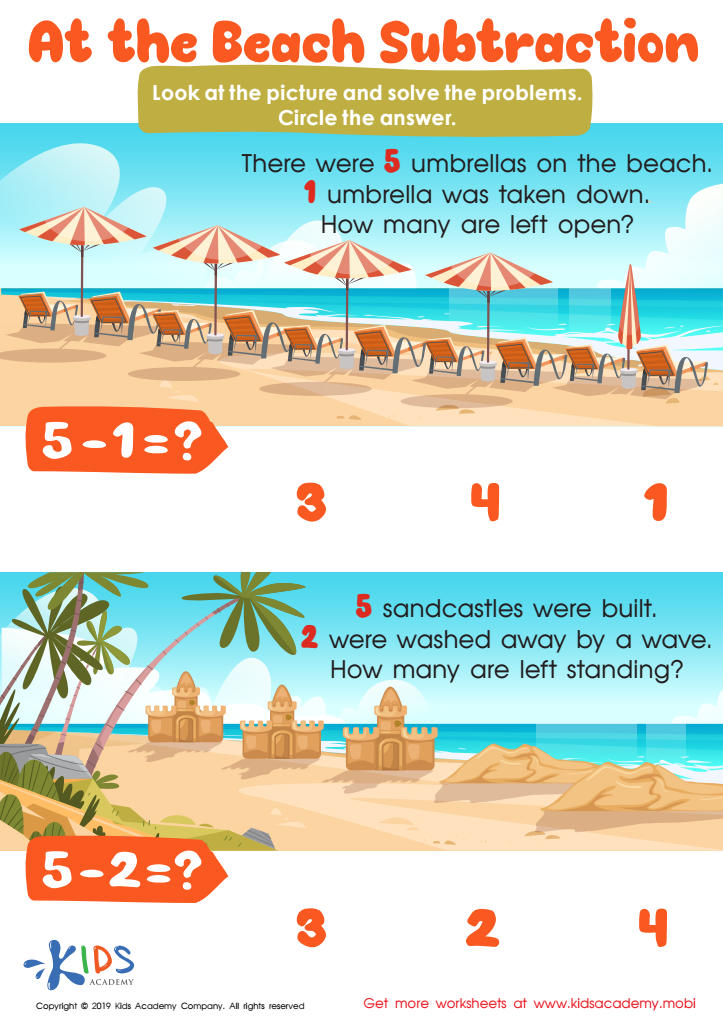

At the Beach Subtraction Worksheet
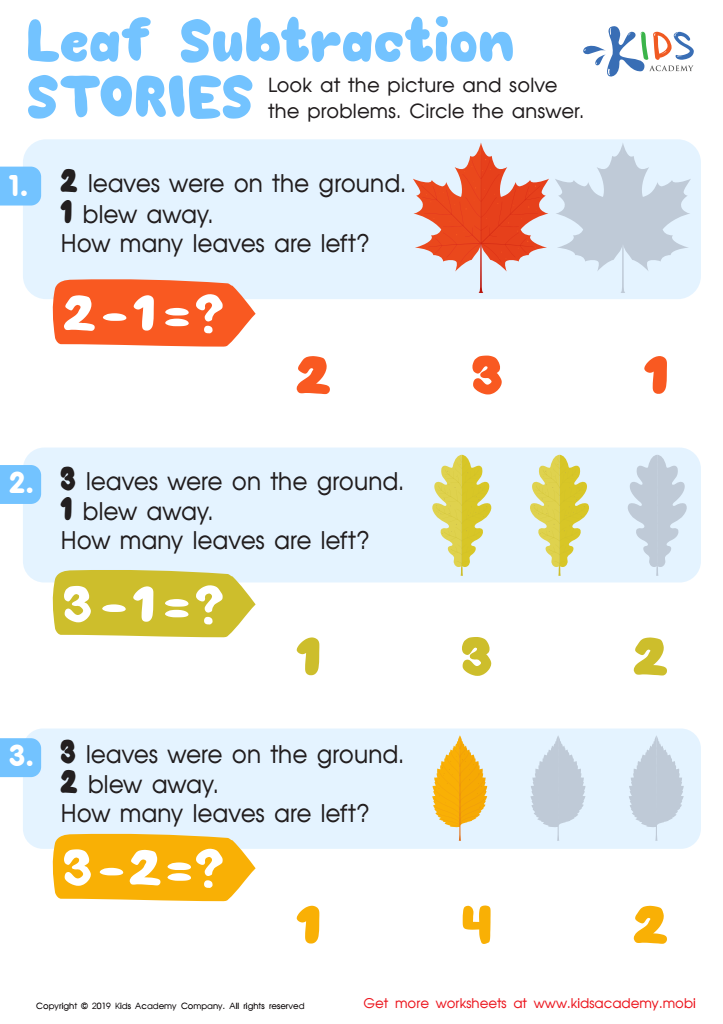

Leaf Subtraction Stories Worksheet
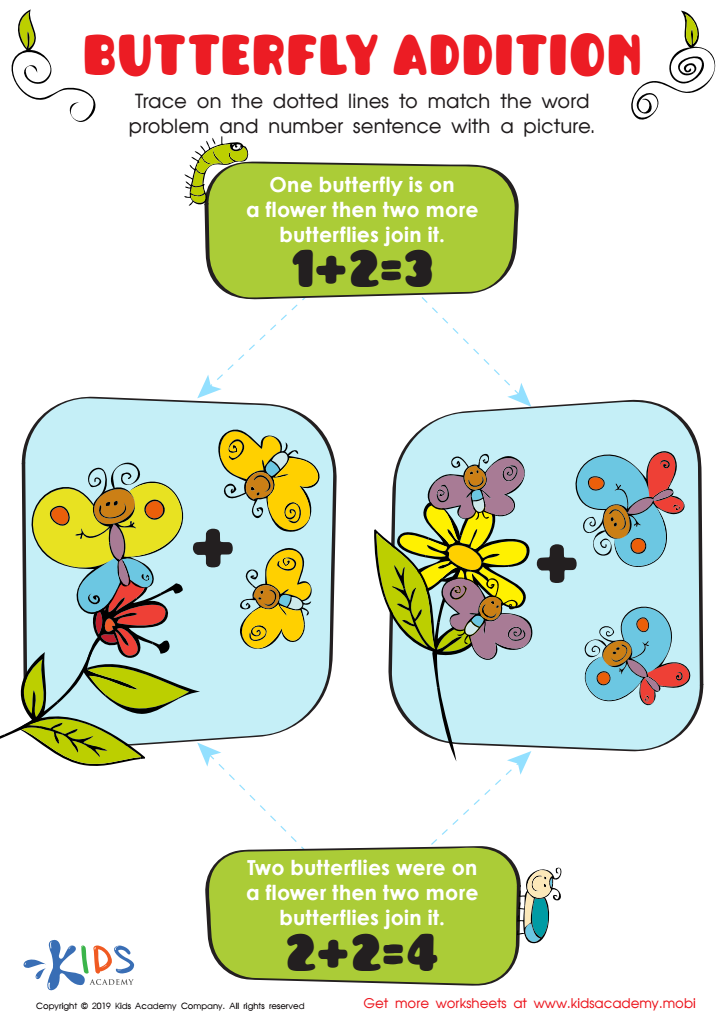

Butterfly Addition Worksheet
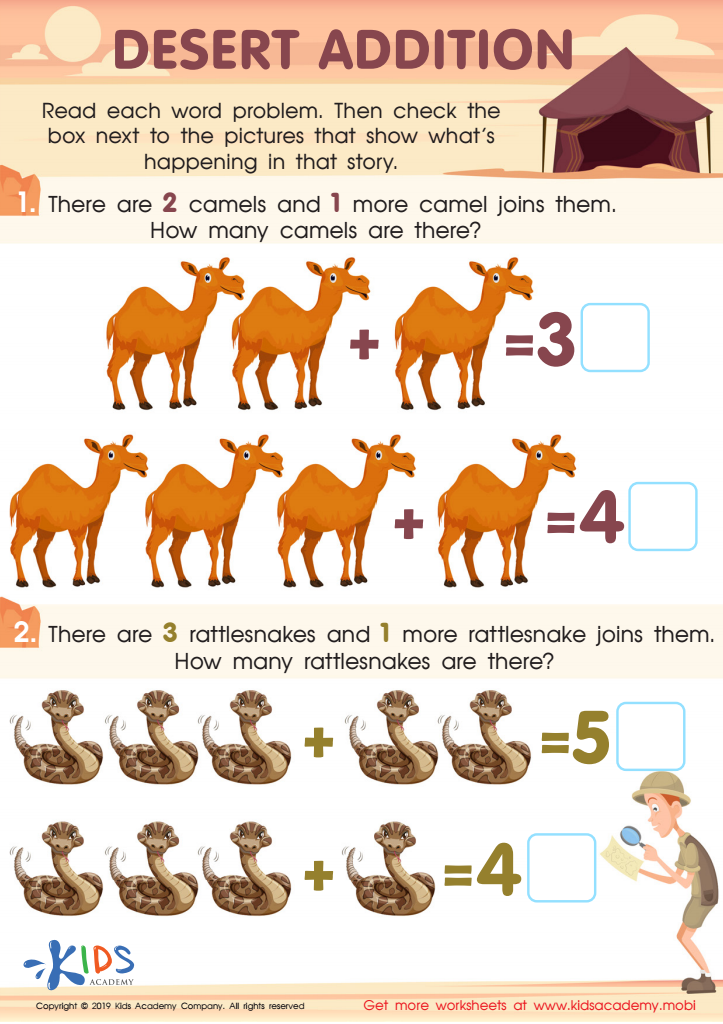

Desert Addition Worksheet
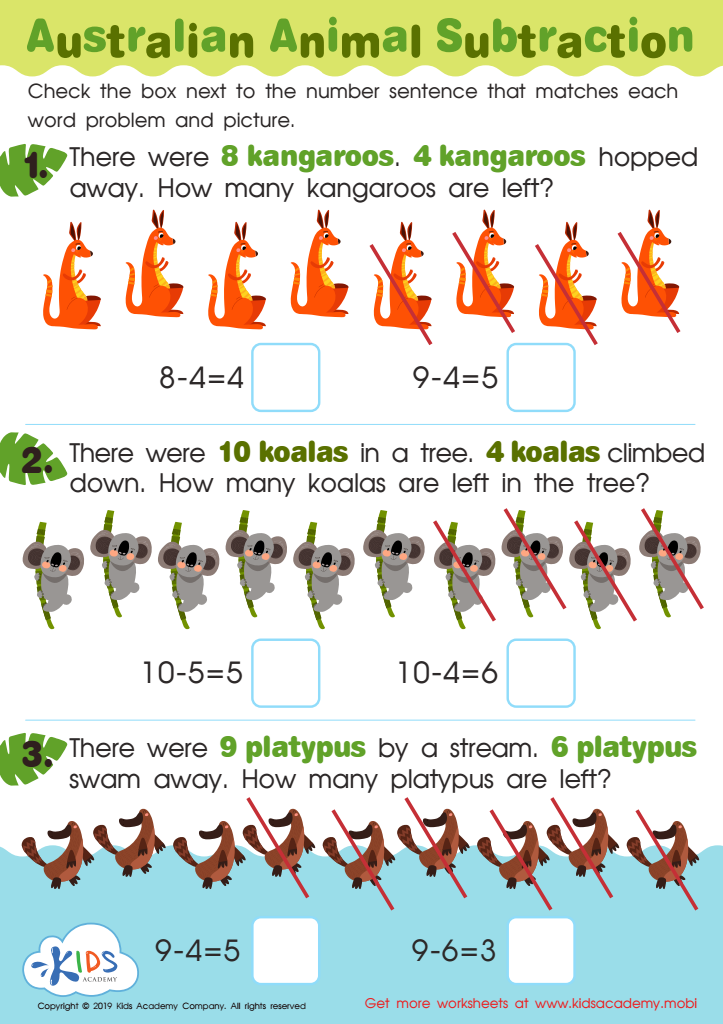

Australian Animal Subtraction Worksheet
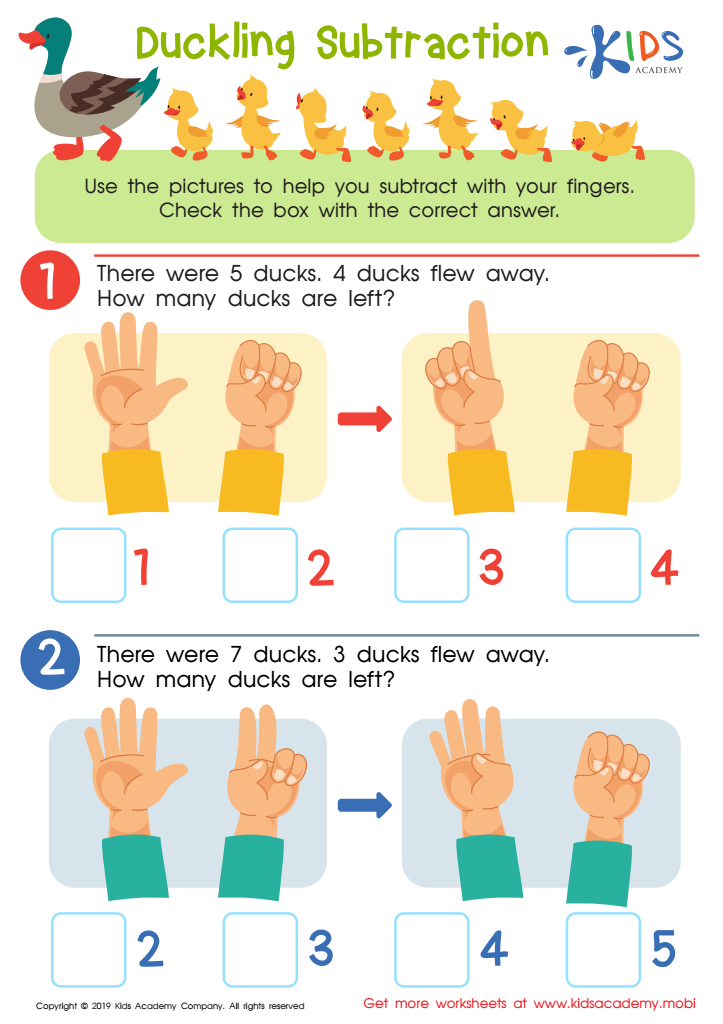

Duckling Subtraction Worksheet
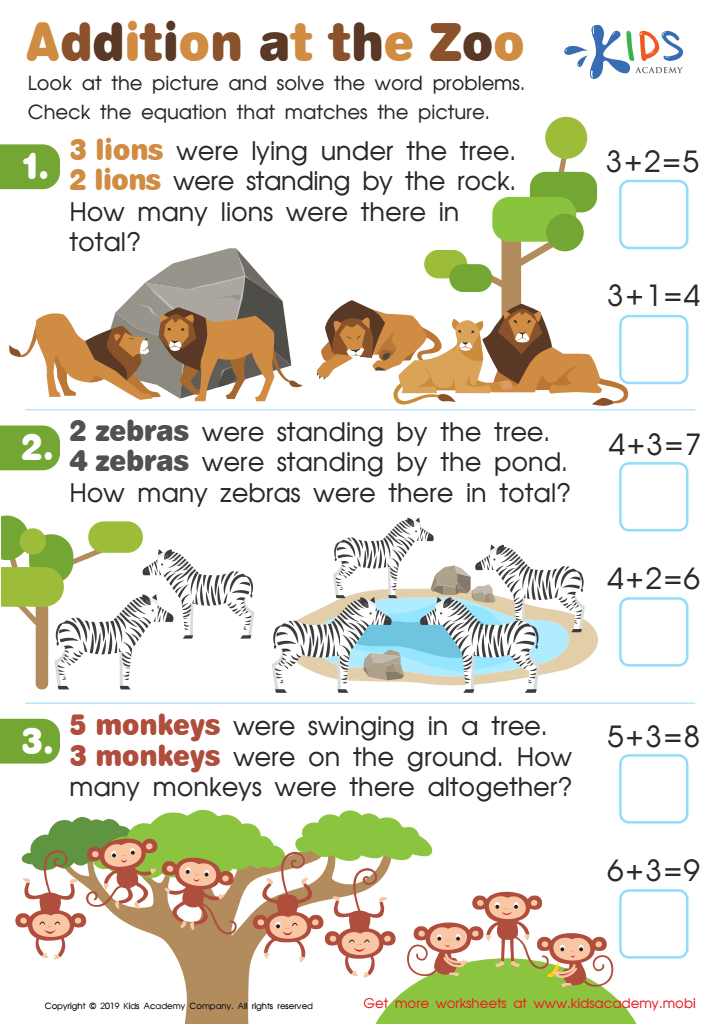

Addition at the Zoo Worksheet
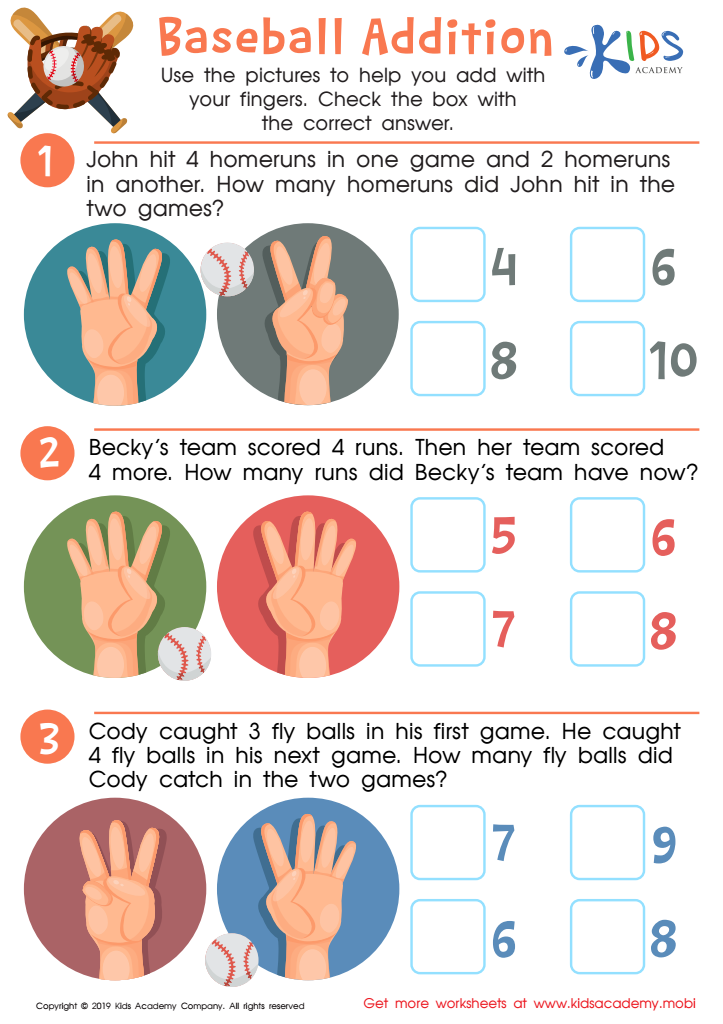

Baseball Addition Worksheet
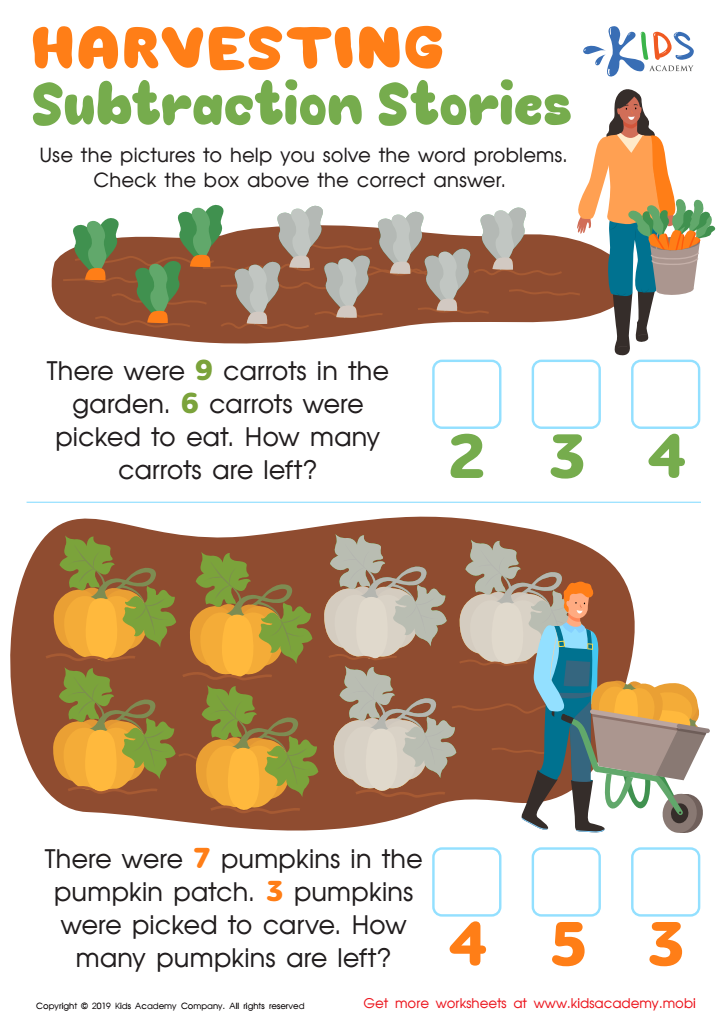

Harvesting Subtraction Stories Worksheet
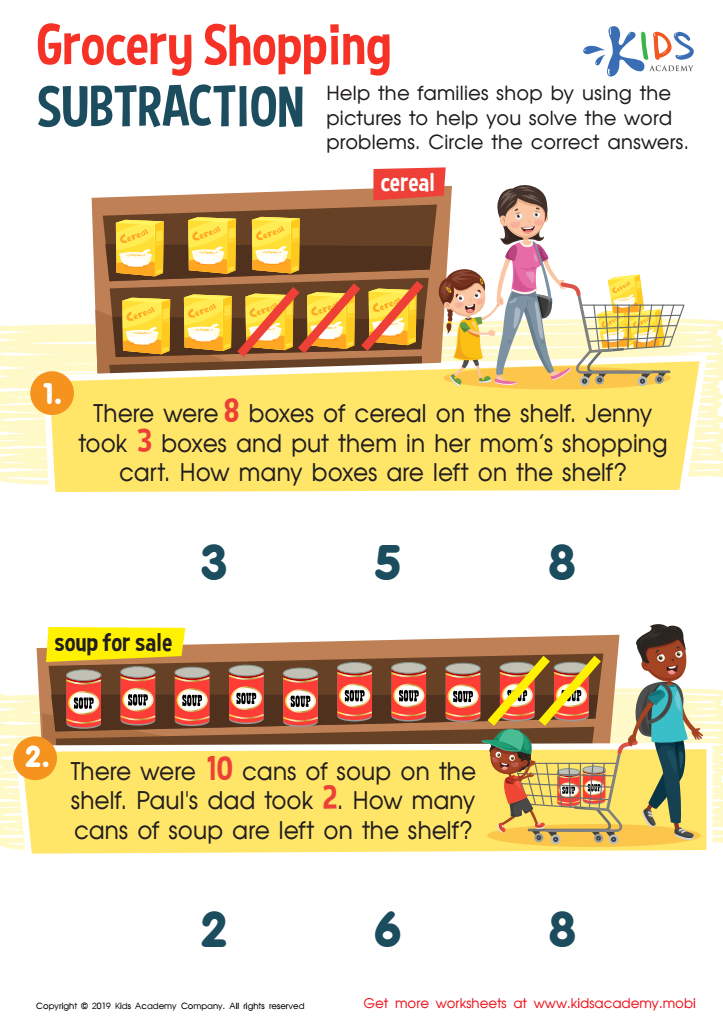

Grocery Shopping Subtraction Worksheet
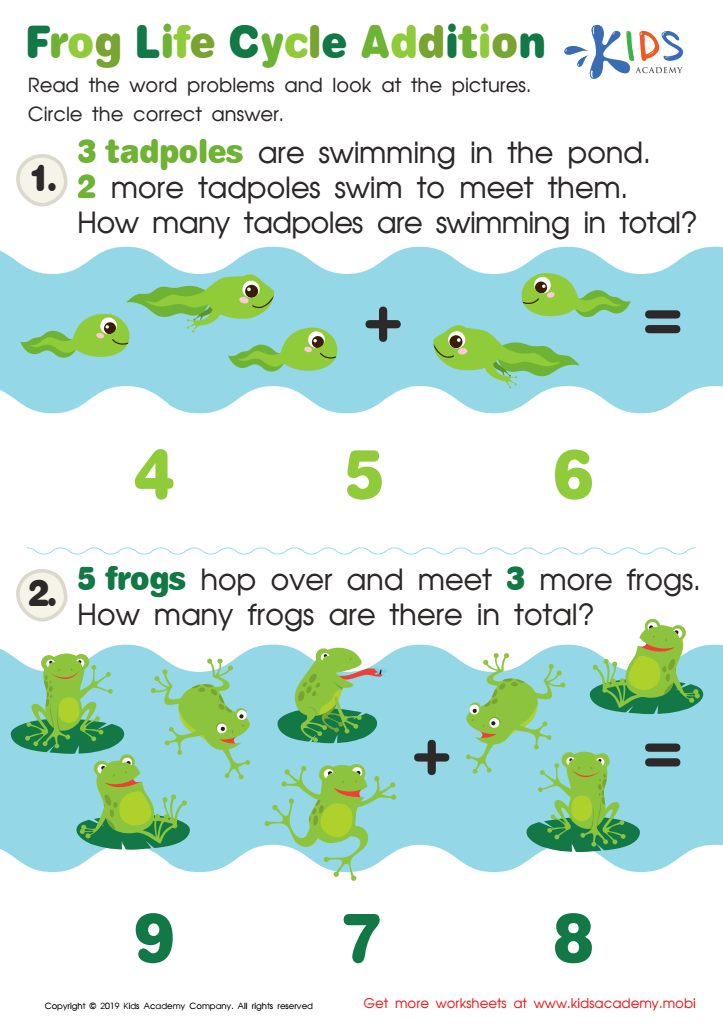

Frog Life Cycle Addition Worksheet
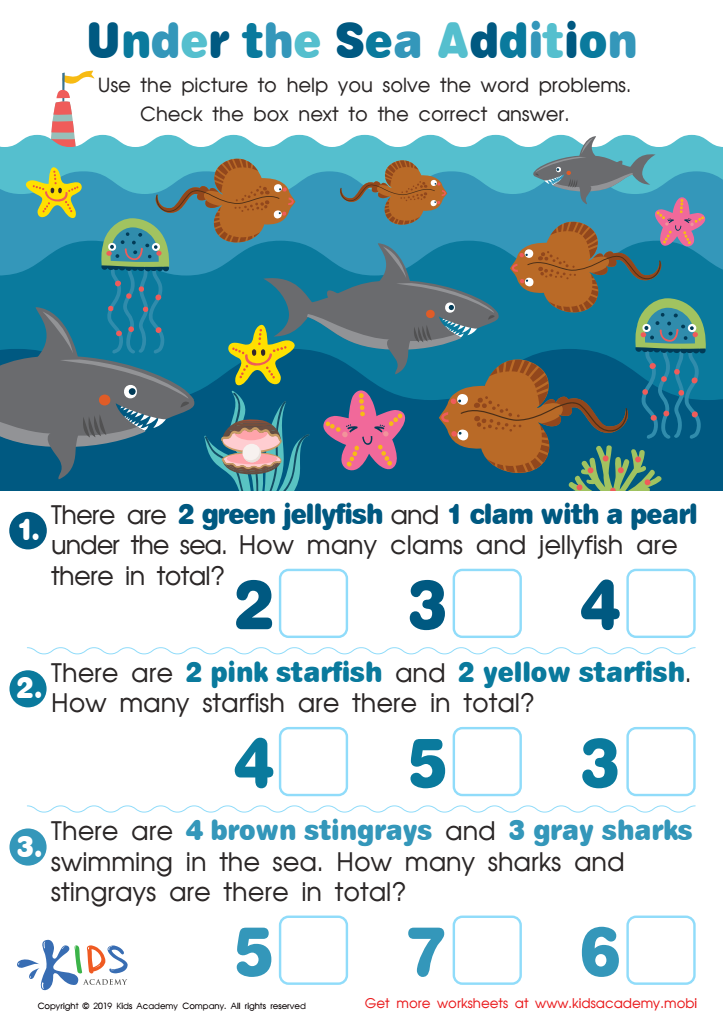

Under the Sea Addition Worksheet
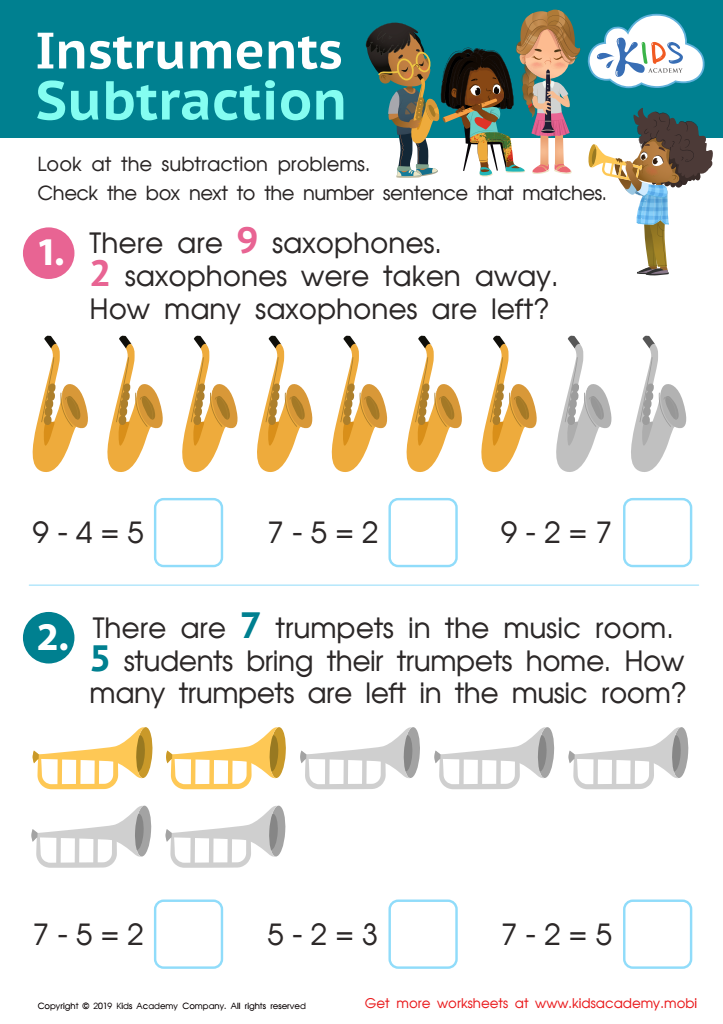

Instrument Subtraction Worksheet
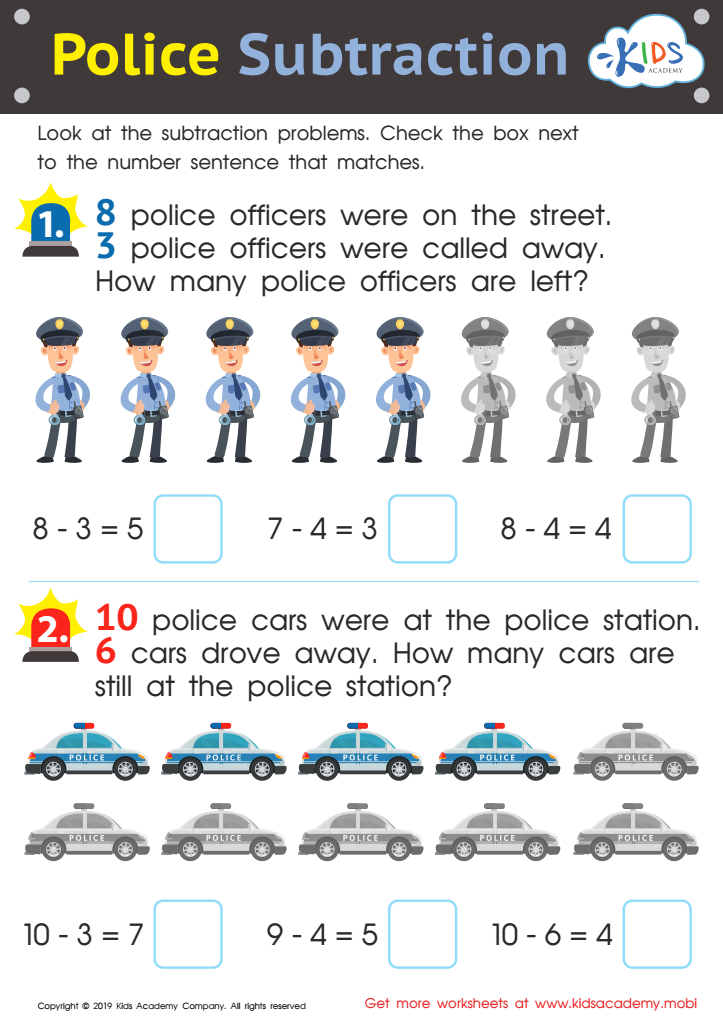

Police Subtraction Worksheet
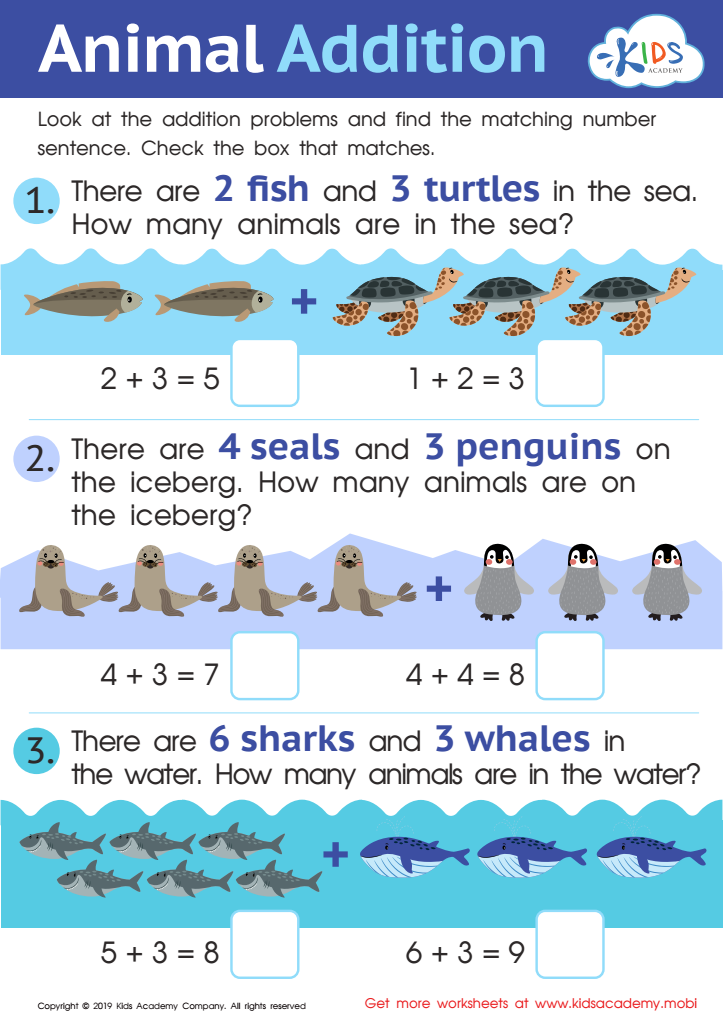

Animal Addition Worksheet
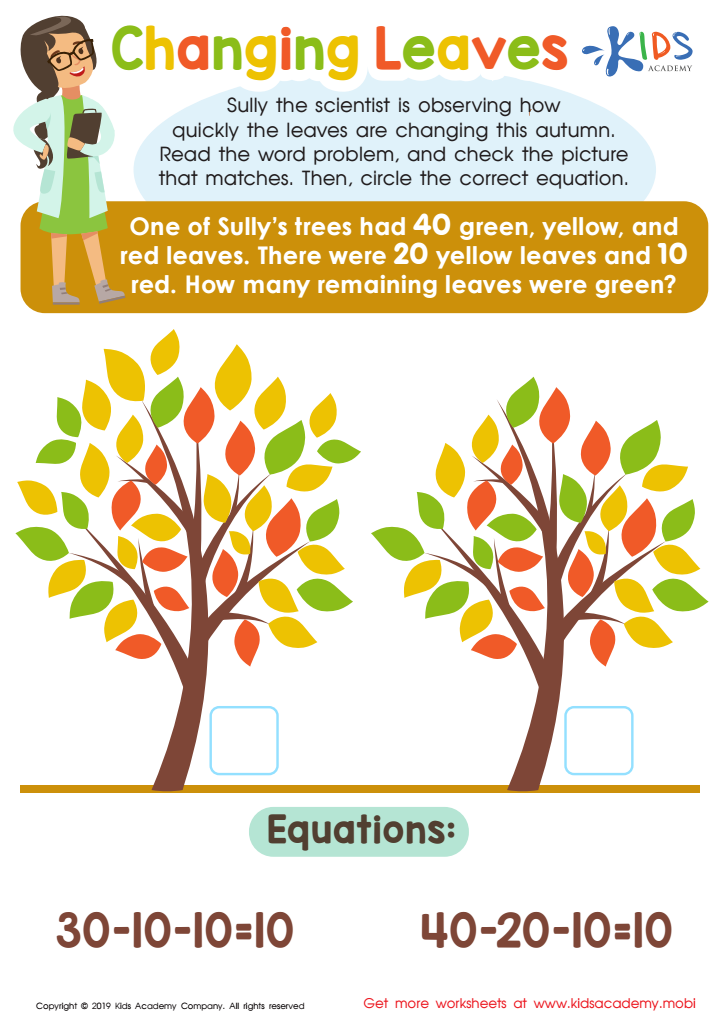

Changing Leaves Worksheet
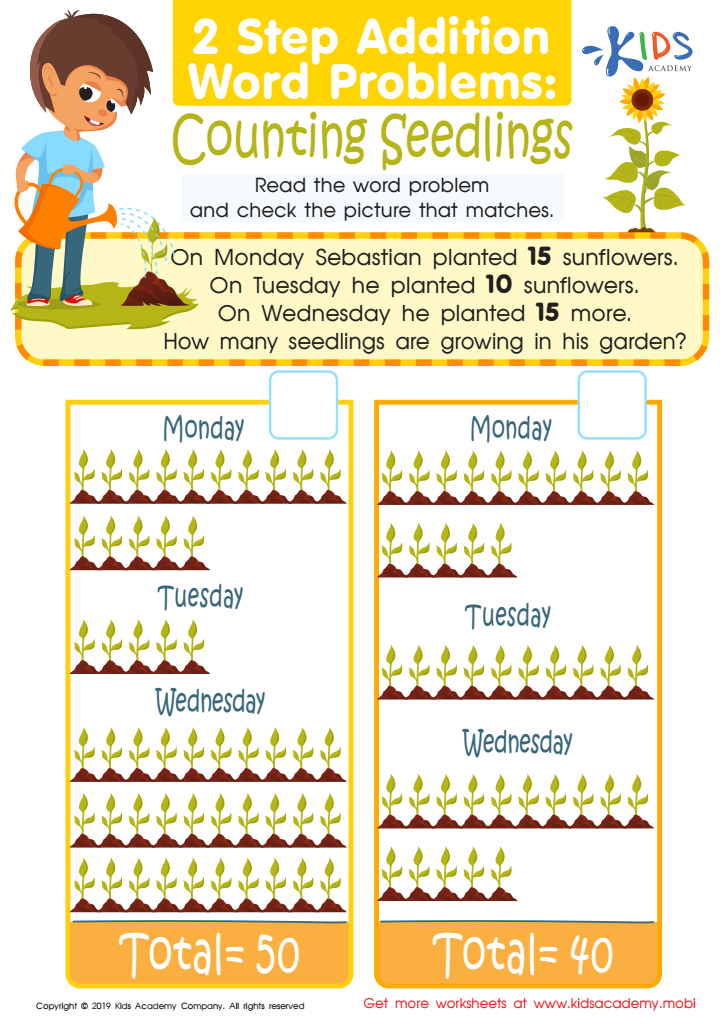

Counting Seedlings Worksheet
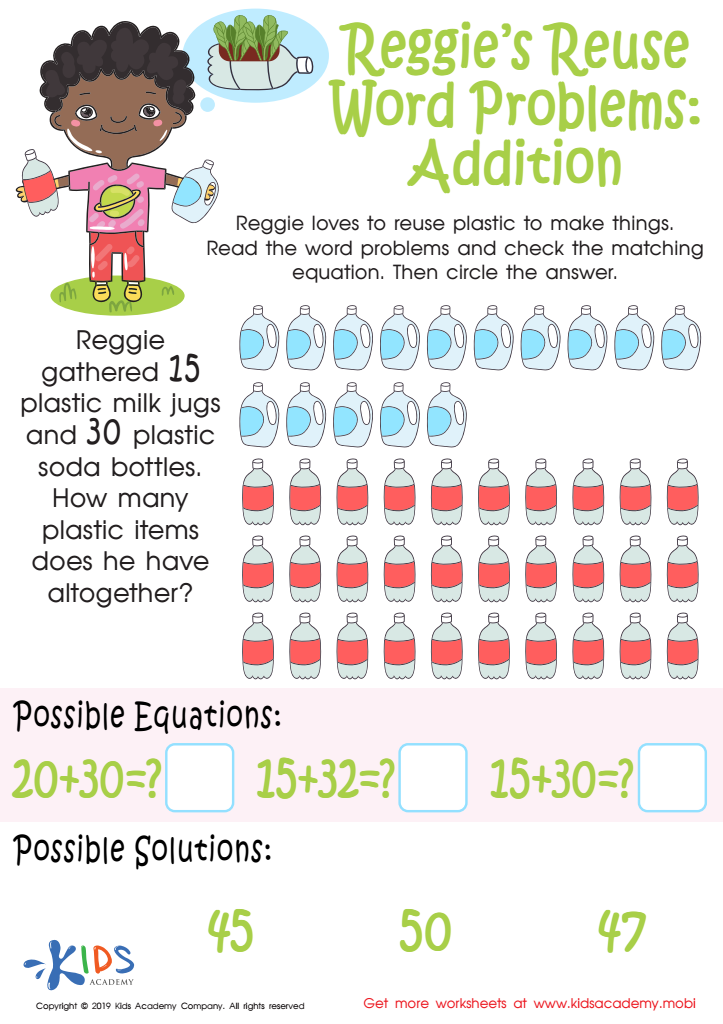

Reggie's Reuse Word Problems: Addition Worksheet
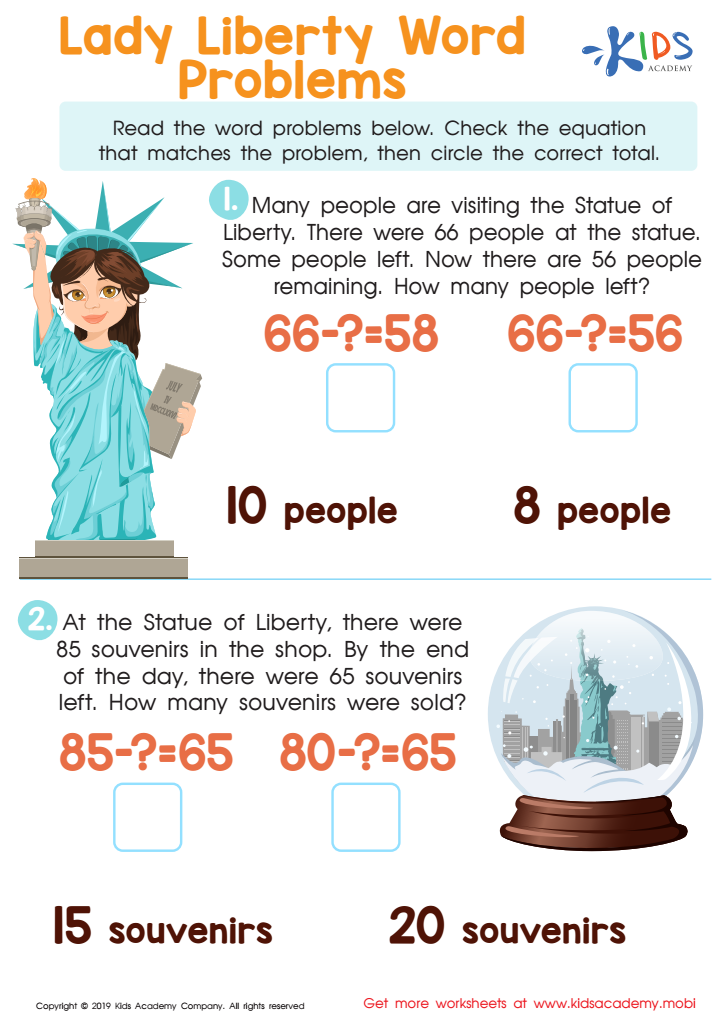

Lady Liberty Worksheet
The Importance of Educational Interactive Printables: Focusing on Easy Worksheets for Addition and Subtraction Word Problems
When it comes to the foundational years of learning, the ages between 7 and 8 are critical in shaping a child's mathematical and problem-solving abilities. At this stage, children are transitioning from concrete to more abstract thought processes, and it is essential to nurture this development with the right educational tools. One of the most effective methods to facilitate this learning is through the use of educational interactive printables, especially easy worksheets focused on addition and subtraction word problems.
Mathematics, at its core, is not just about numbers and operations; it involves understanding concepts and applying them to real-world scenarios. This is where addition and subtraction word problems come into play. They are designed not just to test a child’s ability to compute, but also to enhance their reading comprehension and logical reasoning skills.
Why Focus on Easy Worksheets?
Easy worksheets on addition and subtraction word problems are tailored specifically for children aged 7-8. At this developmental stage, children are more receptive to learning through patterns and simplified presentations. These worksheets provide just that – a clear, straightforward approach that aligns with their learning capacities. By focusing on simpler problems, these worksheets help build confidence in young learners, which is crucial for their ongoing educational journey.
Enhancing Cognitive and Analytical Skills
The primary advantage of using educational interactive printables for teaching maths is their ability to engage children actively. Unlike passive learning, interactive worksheets encourage students to participate in the process, making learning a two-way interaction. As children work through addition and subtraction problems, they not only practice arithmetic but also enhance their problem-solving skills. They learn to analyze questions, identify relevant data, and apply logical steps to reach conclusions. This holistic approach fosters a deeper understanding of maths and its practical application.
Encouraging Real-World Connection
Word problems in these worksheets are often framed around everyday scenarios, making math relatable and relevant. Whether it's figuring out how many apples are left in a basket after some are taken away, or calculating the total number of stickers two friends have together, these problems help children connect mathematical concepts to the world around them. This connection enhances retention and encourages students to apply their mathematical knowledge outside the classroom.
Supporting Differentiated Learning
Not all children learn at the same pace or in the same way. Educational interactive printables are excellent for differentiated learning. They can be easily adapted to suit varying levels of difficulty, ensuring that each child’s unique learning needs and strengths are addressed. For instance, a worksheet could be simplified for a child who is struggling, or made more challenging for those who are advancing quickly. This flexibility ensures that children remain engaged and motivated, and it prevents them from feeling overwhelmed or bored.
Building a Strong Mathematical Foundation
The focus on easy worksheets for addition and subtraction word problems helps form a strong mathematical foundation. Mastery of these basic operations is essential as they are the building blocks for more advanced mathematical concepts and operations such as multiplication and division. Regular practice through these interactive printables ensures that children grasp these fundamentals thoroughly, setting them up for success in higher grades.
Interactive Elements
The term 'educational interactive printables' also highlights the aspect of interactivity. These worksheets often incorporate elements such as puzzles, matching games, and cut-and-paste activities, making the learning process much more engaging and enjoyable for young children. This interactive approach not only helps sustain attention but also improves fine motor skills and hand-eye coordination.
Assessment and Feedback
Another significant advantage of using these printables is their role in ongoing assessment and feedback. Teachers and parents can easily track progress through these worksheets. They serve as both teaching tools and evaluative instruments, helping educators understand where a student might be struggling and where they excel. Immediate feedback is possible as children can quickly see the outcome of their problem-solving efforts, which is vital for their growth and improvement.
Environmental and Practical Benefits
From a practical standpoint, educational interactive printables are cost-effective and environmentally friendly. They can be reused and recycled, and in digital formats, they reduce paper waste altogether. Teachers and parents can print or share them electronically, ensuring that resources are used efficiently and responsibly.
Conclusion
In conclusion, easy worksheets on addition and subtraction word problems are more than just simple math exercises—they are comprehensive educational tools that enhance cognitive skills, nurture problem-solving abilities, and foster a love for learning. With their interactive nature, these educational printables engage children in a dynamic learning process, making mathematics both fun and meaningful. For children aged 7-8, these resources are invaluable in building confidence, competence, and a strong educational foundation that will benefit them for years to come.
 Assign to My Students
Assign to My Students




